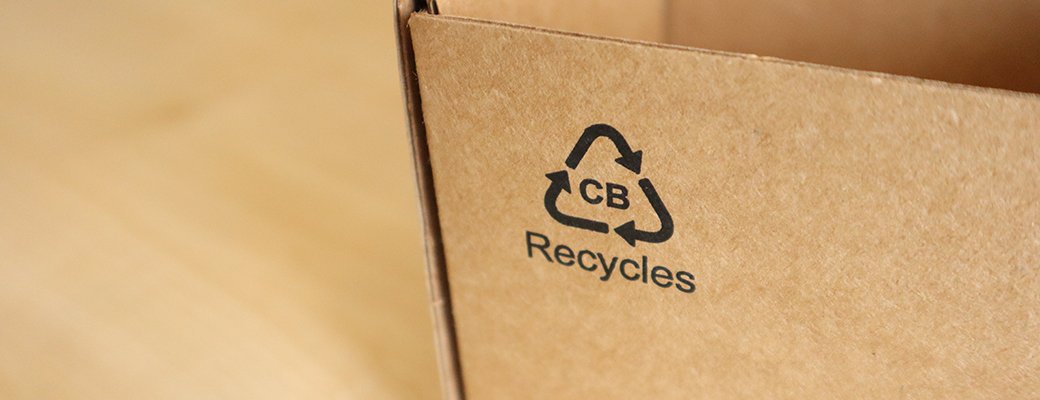
Paper is often unfairly regarded to be as environmentally polluting as plastic. In practice, this turns out to be just a myth. Thus, there are two myths that need to be debunked. Forest management and recycling.
"The European paper recycling rate is 72.3%, which is close to the practical theoretical maximum recycling rate of 78%." - Monitoring Report, European Paper Recycling Council, 2017.
It is often claimed that the use of paper would cause huge numbers of forests to be cut down. A study by the FAO (Food & Agriculture Organization) disproves this claim. In fact, in recent years 45,000 km² of forest have been added. Moreover, sustainable forest management is often practiced in the paper industry. In fact, paper producers have no use for completely chopped down forests.
Thus, many paper producers are constantly trying to replenish the felled trees in order to produce paper responsibly. According to the US Forest Service, 4.5 million trees are planted every day in the United States, 1.7 million of these come from the paper and wood industry. In Europe, the paper and wood industry supports the European Commission's iniative to plant 3 billion trees by 2030. So compared to plastic, this is a much more sustainable practice. The trees are constantly replanted; whereas the fossil fuels (such as crude oil), used to make plastic, will one day be depleted.
People often talk about how less CO? can be absorbed & purified from the air due to forest clearing. This is also a myth. Thanks to tree replanting, there is only a temporary reduction in CO? storage capacity. These managed growing forests with young trees annually purify more and faster CO? from the atmosphere than an untouched forest with old trees if they covered the same area. By replanting trees, the paper and wood industry can actually compete for the environment & climate.
To illustrate, here is an example from a study by the Birmingham Institute of Forest Research (BIFoR). They studied from 1981 to 2010 which type of forest is best at absorbing CO?, the old forests or the new forests. The results of the study showed that intact old forests absorbed & maintained 950 million to 1.11 billion tons of carbon per year. Young forests (the ones that have been growing for less than 140 years) absorbed between 1.17 and 1.66 billion tons per year. Therefore we can conclude that the younger forests score significantly better than the old-growth forests.
But why do these young forests absorb more carbon dioxide? BIFoR scientists claim that recently deforested areas form open and sunny zones. These are subsequently more easily recolonized by fast-growing plant & tree species. These species can take the CO? out of the air & incorporate it into their biomass faster versus the mature trees that have to deal with many neighbors and therefore can absorb less sunlight.
PrintSimple is also contributing to sustainable forest management, not only by selling ECO products, but also through its partnership with WeForest. For every order at PrintSimple, WeForest plants a tree. As a result, since the beginning of our partnership with WeForest, 38,387.5 m² of forest have already been directly restored and 559.6 tons of CO? emissions neutralized over a period of 20 years. The organization's main goal is to work with other partners to reduce greenhouse gas emissions and limit global warming to a maximum increase of 2 °C.
Tip: Find out more about our partnership with WeForest. One tree for every order.
Unjustly, the paper industry is often given a big-polluter image. On the contrary, the paper industry is a pioneer of the circular economy. For example, according to a study by CEPI Key Statistics, 53% of the fibers used for paper come from used paper. If paper does end up in our environment, it does not pose a major problem, because it is a biodegradable material, this is not the case for most types of plastic.
71% of wood and 83% of pulp purchased by the European pulp and paper industry is FSC or PEFC certified. Paper can be recycled up to 7 times before the fibers become too weak for further usage. The fibers used for recycling are mostly sawdust. In the United States, they recovered more than 50 million tons of paper in 2021 and the paper recycling rate was 68%. In Europe, the rate was as high as 71.4% in 2022.
There are of course several reasons why there are still so many myths circulating about the impact of paper on climate & environment. One major reason is that we are not yet fully aware of what is really going on in the printing industry. For example, according to a 2017 study by FSC Belgium, only 42% of Belgian consumers are familiar with the FSC label, while 83.1% of graphic paper has an FSC-PEFC label.
Tip: for more information about FSC or PEFC, you can read this FAQ about the ESG certificates and labels. But is all our paper FSC certified? See our FAQ about the FSC certification of our paper.
Thus two of the dogmatic myths about the paper industry have been debunked after all. No industry will be completely saintly in its effect on the environment & climate, but paper production is certainly not the greatest enemy to the healthy survival of Mother Earth.